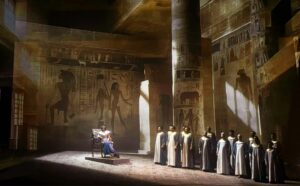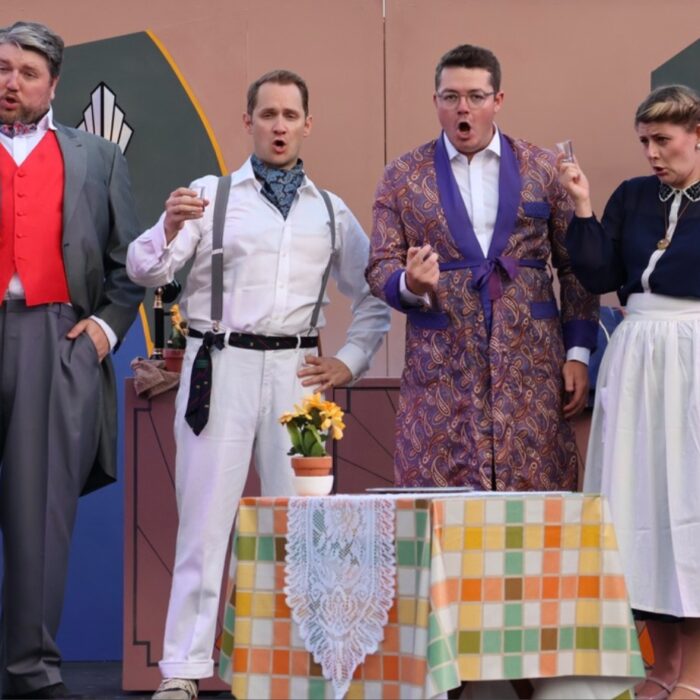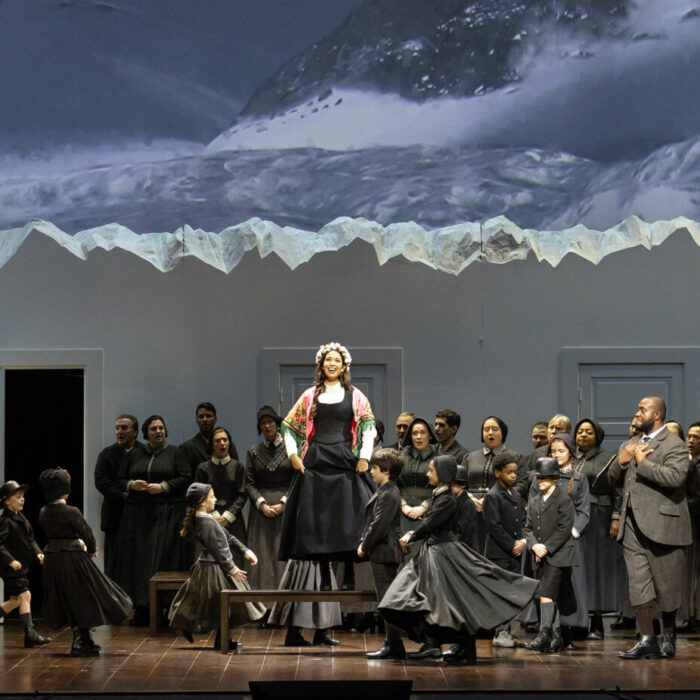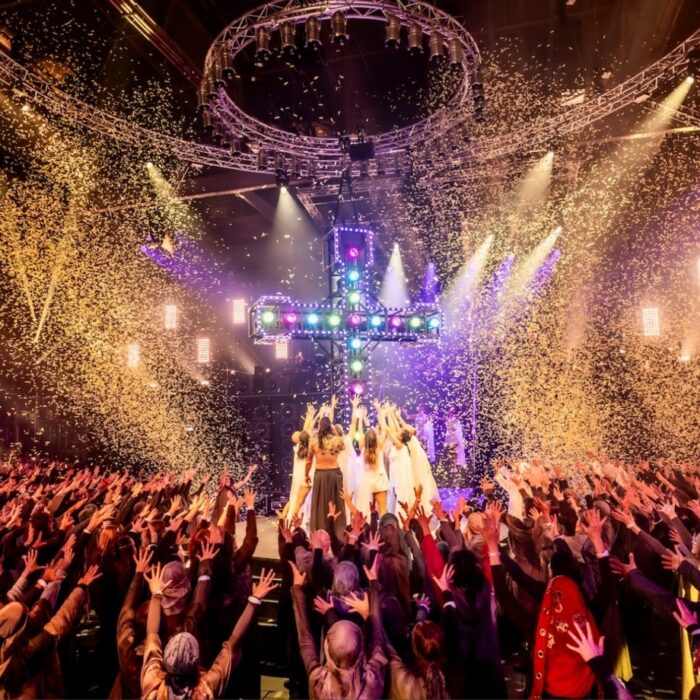
Teatro Comunale di Piacenza 2024 Review: Mosè in Egitto
A Production Honoring Italian Operatic Tradition as an Act of Pure Theatrical Magic
By Bernardo Gaitan(Photo: Rolando Paolo Guerzoni)
Composed by Gioachino Rossini in 1818, “Mosè in Egitto” is an opera that deserves close attention for its historical and musical significance. Created during a transitional phase in his career, Rossini crafted a masterpiece that merges sacred drama with opera seria. Based on the biblical tale of Exodus, Moses in Egypt marks a turning point in Rossini’s lyrical output, representing a meaningful step towards his development of Romantic opera.
Commissioned by Teatro San Carlo in Naples for a Lenten debut in March 1818, the work was conceived as a sacred drama, avoiding the profane elements typically prohibited during Lent. Featuring rich elements of religious devotion and the grandiosity of Italian melodrama, it stands out for its spiritual depth and dramatic power. Recognizing this, the Teatro Comunale di Modena, Teatro Municipale di Reggio Emilia, and Teatro Municipale di Piacenza joined forces in 2024 to bring a new production of this singular title to life.
Illuminating Production Details
The original 1818 staging drew heavy criticism for a critical scene: the parting of the Red Sea. Technical mishaps undermined the spectacle, drawing unintended laughter by the public and severs reviews instead of awe. Staging such wonders from the libretto—like the miraculous parting of the sea—is a chance to explore advanced theatrical technologies and offer audiences a breathtaking visual experience.
For the Italian co-production in question, Pier Francesco Maestrini proposed an extremely ingenious traditional version that fulfilled the effects Rossini and impresario Barbaja once envisioned. The Florentine director made use of technology, artificial intelligence and, of course, the talent of his creative team to surprise and thrill the audience by recreating the biblical plagues, but above all with the imposing and risky ending of the opening of the sea to exterminate the Egyptians.
The set design and video projection were the key pieces of the production, both created by Nicolás Boni. The Argentine set designer created a 3D stage, positioning animations on a backwall that occupied the entire back of the stage, while a transparent cyclorama positioned on the proscenium projected the complement of what was happening in the rear animations, thus creating a three-dimensional space where the scene took place.
The dark lighting design by Milanese Bruno Ciulli helped Boni’s animations to shine; although moments of great luminosity occurred when one of Moses’s miracles took place, making a perfect pair. For their part, the costumes designed by Stefania Scaraggi were of great help in differentiating the Egyptians from the Jews, a banality that is not always so evident in some conventional productions and that is very useful for the spectator.
Cast Highlights
This “Mosè in Egitto” exemplifies Rossini’s stylistic evolution, blending the force of religious drama with the lyrical beauty of bel canto. The character of Moses, a figure of divine and moral authority, was masterfully portrayed by Michele Pertusi. The Parmesan bass brought impressive gravitas, displaying a deep grasp of serious bel canto. His rendition of “Tu di ceppi m’aggravi” —an aria Rossini recycled from “L’italiana in Algeri’s” Mustafà— demonstrated enviable vocal control and earned well-deserved applause.
Andrea Pellegrini gave a dramatic portrayal of the Pharaoh, whose resistance to liberating the Hebrews forms one of the opera’s main tensions. Although vocally uneven, Pellegrini compensated with a nuanced acting performance. In contrast, Italian soprano Mariam Battistelli brought Amaltea to life with a crystalline, agile voice, convincingly portraying the Pharaoh’s wife who tries to protect the Jews because she secretly converted to their religion.
Rossini faithfully follows the biblical framework but introduces themes of inner conflict, forbidden love, and redemption—hallmarks of emerging Romantic opera. The lovers Osiride and Elcia, divided by religious and political obstacles, echo the star-crossed lovers of classical tragedy. Dave Monaco brought Osiride, the heir to the Egyptian throne, to life with a light but graceful and elegant voice. The tenor with beautiful high notes and a correct singing line offered an excellent stage and vocal performance. In contrast, the Romanian soprano Aida Pascu as Elcia was a bitter disappointment. Although her middle register had a certain charm, as she ventured into the high register, her voice became more stifled; as she reached the high notes an unpleasant hollow sound ruined Rossin’s iconic concertantes.
Andrea Galli played Mambre, the high priest dismissive of Moses, with impressive stage presence despite limited vocal projection. Moses’s siblings, portrayed by Matteo Mezzaro as Aronne and Angela Schisano as Amenofi, were well-acted and vocally strong.
More Production Spotlights
Rossini’s score, with its intricate mix of harmonies and styles, poses a considerable challenge for those who stand in the orchestra pit. In this production, the maestro Giovanni Di Stefano, who leads the Orchestra Filarmonica Italiana, which boasts of having more than 50 operas, gave a faithful and academic interpretation, without great innovations, but always respectful of Rossini’s text. With precise control of the orchestra, he kept the tempo extremely well and took care of the volume at all times. It is worth highlighting the quartet “Mi manca la voce, mi sento morire” which was anthological thanks to the romantic dynamics of the veteran conductor.
Rossini’s masterful use of the choir requires a high-level interpretation, something that the Modena Lyric Choir fulfilled with flying colors under the direction of its director Giovanni Farina. The choir’s part was so appreciated that something unusual happened: after the beautiful performance of the choral preghiera: “Dal tuo stellato soglio” the public shouted “Bis! Bis! Bis!” From the pit, Di Stefano had no choice but to please the audience and repeat the choral part.
Reviving this extraordinary work today honors Italian operatic tradition in an experience that marries legacy with innovation. When technology and creativity unite, as they did in this flawless co-production, the experience transforms into an act of pure theatrical magic.



